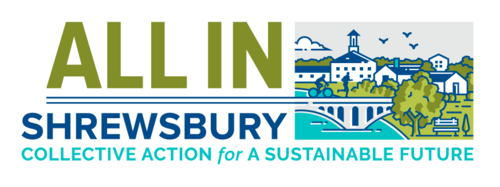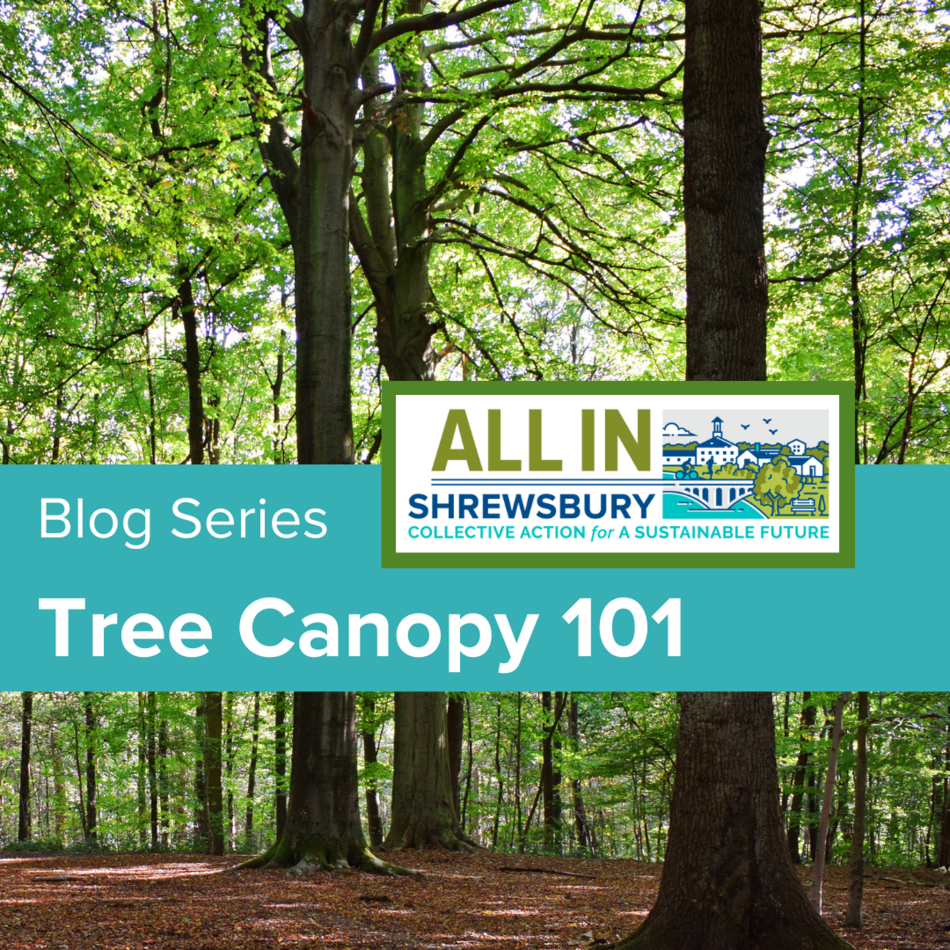Hey Shrewsbury! Today, we are talking trees. Why they are great for our health, great for our environment, and great for our climate.
Did you know Shrewsbury has excellent tree coverage?

Shrewsbury's Tree Equity Score is high across the entire community, ranging from 80 to 100 in each census block group. A score of 100 means that the neighborhood has achieved the percentage of tree canopy recommended for that particular area (in Shrewsbury, 50% tree canopy is recommended). Shrewsbury has met canopy cover goals in most neighborhoods, ensuring those residents have equitable access to trees and their many benefits, but falls below the goal of 50% canopy cover in a few areas that can be prioritized in the future for planting projects.
Improving and expanding our tree canopy is beneficial for the environment and our health. The primary contribution that trees make to our public health is improved air quality. Through photosynthesis, trees absorb carbon dioxide and other harmful pollutants from the atmosphere, releasing oxygen in exchange. This process helps to reduce air pollution, which can alleviate respiratory problems and cardiovascular diseases in humans.
Our environment benefits from our tree canopy too. Trees provide essential ecosystem services that support biodiversity and ecological balance. They serve as habitats for numerous species of animals, birds, and insects, playing a crucial role in preserving biodiversity. Additionally, tree roots stabilize soil, preventing erosion and protecting water quality by filtering pollutants from runoff. With flooding projected to become more frequent in the next decade, this erosion-stabilizing service trees provide is more important for our resilience than ever.

In more developed areas, trees offer shade and cooling effects, reducing the urban heat island effect and providing relief from high temperatures during summer months. This not only enhances the comfort of urban residents and builds community resilience to extreme heat, but also lowers energy consumption for cooling buildings, thereby reducing greenhouse gas emissions.
Did you also know that trees contribute to climate change mitigation by acting as carbon sinks? They absorb carbon dioxide from the atmosphere and store it in their biomass and soil, helping to offset the impacts of human activities such as burning fossil fuels and deforestation. Increasing the global tree cover is essential for sequestering more carbon and combating climate change.
Beyond their environmental benefits, trees also have significant socio-economic impacts. They enhance property values, attract tourism, and provide opportunities for recreation and relaxation, thereby contributing to the overall well-being and quality of life in communities. We want to take steps so that all residents have easy access to local natural areas like parks so everyone can benefit from our amazing trees and open spaces!

Take action for our trees:
Learn how to plant native species to reduce local heat, absorb and filter stormwater, provide habitat to pollinators, and beautify your home!
Use the Town’s official Planting Guidelines
Help protect local natural spaces.
Volunteer with the Lake Quinsigamond Watershed Association.
Explore nature conservation posts every Wednesday!
Previous Post
Quick Start Home Solar Guide
Next Post
3 Ways to Electrify Your Home

